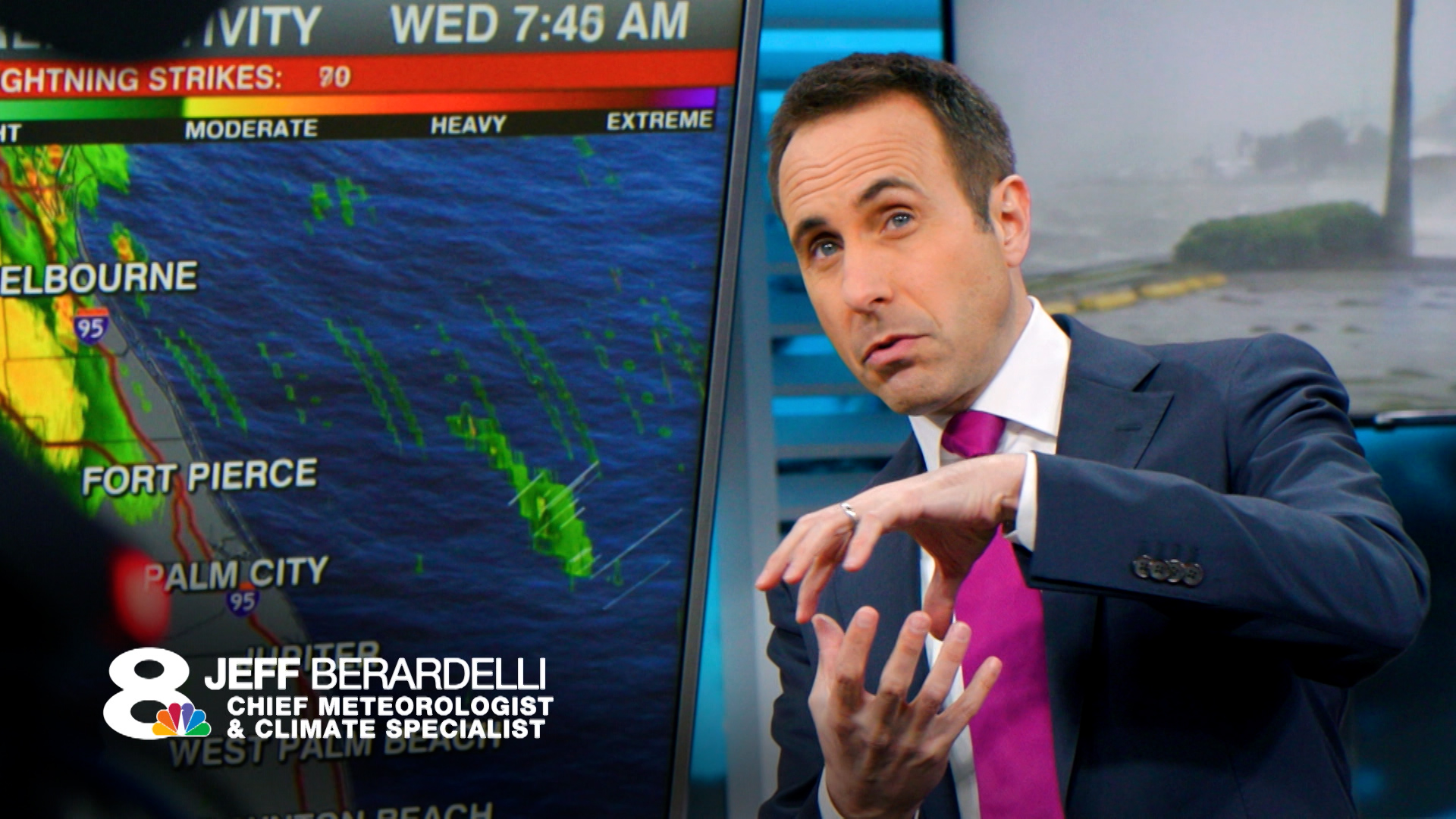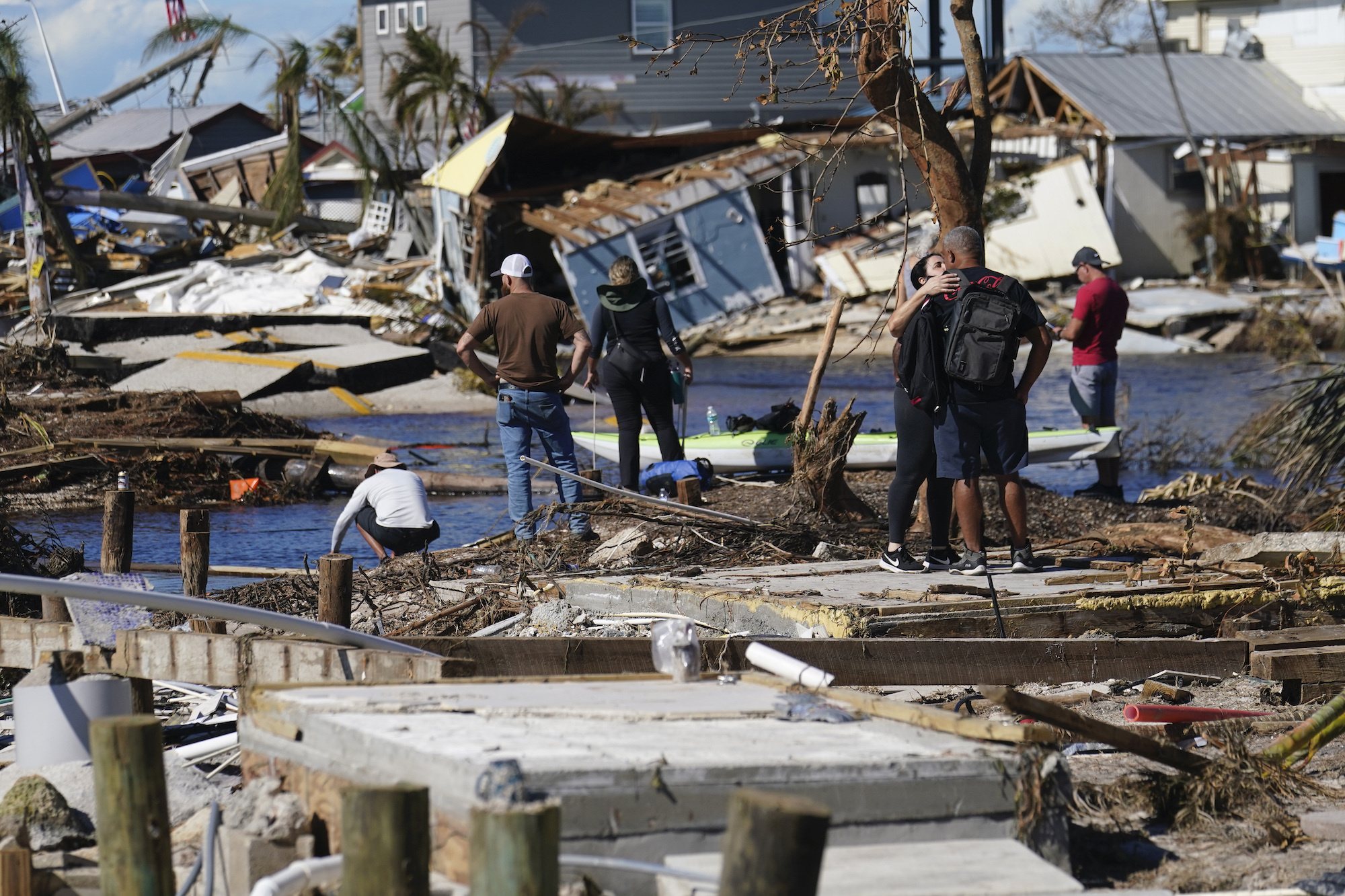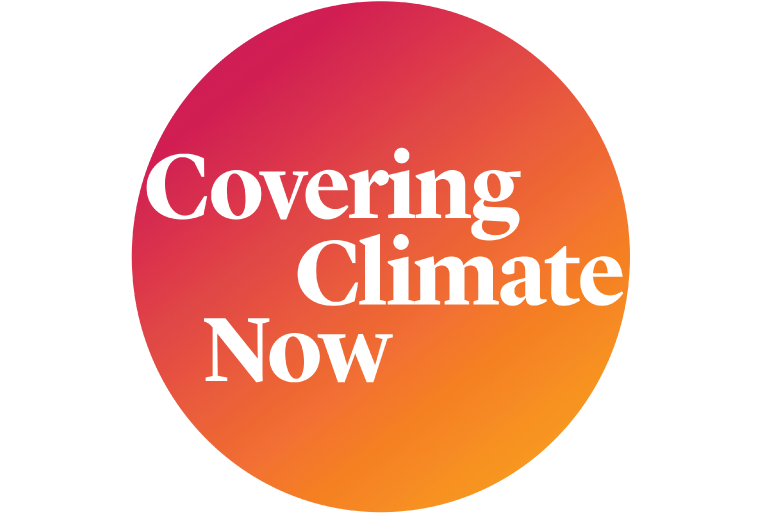Each month, Covering Climate Now speaks with different journalists about their experiences on the climate beat and their ideas for pushing our craft forward. This week, we spoke with Jeff Berardelli, the chief meteorologist and climate specialist at WFLA-TV in Tampa. Berardelli was previously the meteorologist and climate specialist for CBS News in New York, where he was at the forefront of the climate conversation in the national media. We spoke about Hurricane Ian, Berardelli’s shift from a national to a local stage, and the imperative of building trust with local audiences. The conversation, with CCNow deputy director Andrew McCormick, has been edited for length and clarity. Follow Berardelli on Twitter.

Jeff Berardelli. Courtesy of subject and WFLA
How early did you have a sense that it would be such a large storm with so much capacity for destruction?
As many as ten days out, the meteorology community understood that this storm was going to be different. We knew both that this was likely to be a very powerful hurricane and that it was likely to be in the eastern Gulf of Mexico.
This kind of certainty is extraordinarily rare. Every year, computer models forecast dozens of storms, but only some happen; the challenge for meteorologists is to understand which forecasts are likely spurious manifestations of the models and which to raise the alarm about. In this case, there was a lot of agreement between different models, and the environment in the Caribbean was very ripe for a major storm to develop and head in our direction. So I gathered people at the station and said, “We need to take this seriously. Let’s make sure our messaging is clear.”
And what were some of the key points of that messaging? Did you face any challenges?
People from Florida pride themselves on the fact that they’ve weathered many hurricanes. But the truth is most of us haven’t ever weathered the core of a truly catastrophic hurricane, like Ian. Being a Tampa meteorologist, I was keenly aware that people here haven’t been through a major hurricane; the last direct hit to this area was over a hundred years ago. So a lot of the messaging leading up to the storm was aimed at getting people to take the risk seriously and evacuate if they were told to. Which is difficult. Evacuating can be very expensive; some people might not have family or friends they can go to, and others might not be physically able to leave.
We also wanted to be clear that we didn’t know exactly where the storm was going to go—and this is a situation where a small, fifty-mile change can mean the difference between a hurricane destroying Fort Myers or destroying Tampa. One thing that worried me was when the model started to show the storm would head toward Florida’s panhandle, toward Panama City and Pensacola; at the same time, the National Hurricane Center had also shifted its track farther west. To me, though—and I expect to other meteorologists—this didn’t seem like a believable track.
It’s not responsible of me to go completely against the grain on air and say, “Well, the computer models and the National Hurricane Center both say the storm is going to the panhandle, but I disagree.” Because if I get that wrong, you can bet no one will ever watch me again. I need to have credibility, so that when storms do come, people believe me and take necessary actions to protect themselves. The way I handled this was to stress that the hurricane’s track wouldn’t be locked in until a day or two before landfall—that people should expect forecasts to “windshield wiper” back and forth. And I added, in almost every weathercast, that the one thing I’ve learned covering hurricanes is they always have a last-minute trick up their sleeves. Even if the storm looked like it might go elsewhere, we shouldn’t assume that the Tampa area isn’t in play—which, of course, it turned out it very much was.
This was your first major storm since you moved from New York to Tampa. How did covering the storm for a local audience differ from covering extreme weather for a national audience at CBS?
Most people in harm’s way are not watching the national media. So when you’re covering a storm for a national audience, you want to put it into perspective quickly, so people understand the gravity of the situation. When you’re doing the story for a local audience, it’s much more about holding people’s hands and giving them the information they need, tailored for their individual communities, to recognize the threat and take proper precautions.
What matters on the local level more than anything is that you can be a trusted source for your viewers. That trust comes partly from being in a place for a long time. I’ve only been here for eight months, but earlier in my career I lived here and did the weather for several years—and I would say Tampa is the place I’ve always most associated with “home.”
There’s some debate among journalists about whether during a storm is the right time to make the climate connection—a time when safety is obviously the top priority for many people. How did you approach the need to provide vital, potentially lifesaving information that people need to prepare for a storm while also making space for climate change as context?
Well, it depends. If it’s a hurricane hitting Florida and you’re in Texas or New York, I think it’s okay to make the climate connection while the storm is hitting. But if you’re a local meteorologist, you have to remember that there’s a sizable chunk of the audience who, the moment you say the word “climate,” are going to respond, “I don’t like this clown, and I’m not gonna listen to him.”
This is what we’ve learned from trying to communicate about climate change over the past couple of decades: There’s a small chunk of my audience that likely denies climate change is real, and that’s not something I’m going to change. There’s a larger chunk that believes climate change is happening but has also been sensitized by politics to be very triggered by the word “climate.” That said, I didn’t shy away from climate change. In the days leading up to the storm, I’d throw in a line like, “The storm is moving over some of the warmest water in this part of the world, and by the way, that water is even warmer than normal due to climate change.” And after the storm, I did a segment on how climate change affects hurricanes, explaining that climate change doesn’t cause hurricanes, but science has grown to understand how climate change has made hurricanes stronger and can cause them to rapidly intensify.
It’s often said that local meteorologists are the people best positioned to communicate with others about climate change. What are your thoughts on that, and how does this responsibility shape your approach to the job?
My goal when I went to CBS was to get the national media talking about climate change. I had worked on and off for CBS for twenty years and felt I understood the culture within the company. I also felt that my personality and experience—I have a master’s degree in climate change—would lend themselves to breaking down some of the barriers that had existed to climate coverage. And now I think the networks are talking about climate more often—thanks, I think, in part to my work, and thanks to work by Al Roker at NBC, Ginger Zee at ABC, and Bill Weir at CNN.
Here in Tampa, I have different goals, and those are to gain the trust of the community and, over the long term, to educate people about climate change. My tactics when I’m talking about climate are less overt because it doesn’t behoove me or my station—and it doesn’t behoove the cause of climate progress—to throw climate in people’s faces. I need to be able to bring our audience along, as a trusted messenger. There’s no way that I’m going to shift the area’s culture overnight, so my approach is to talk about climate change methodically—not so much that it alienates people, but not so little that people are able to ignore it.
I need to have credibility, so that when storms do come, people believe me and take necessary actions to protect themselves.
What does that look like in practice, on a day-to-day level?
I do a weekly segment called “Climate Classroom.” And even with this segment, I don’t talk about climate change every week, because the climate is a lot bigger than climate change. In order for people to believe in and understand climate change, I think it’s important to help them understand the climate first. Before Hurricane Ian, for example, I did a story about why the Tampa area and the west coast of Florida are most vulnerable to hurricanes during the fall, which has to do with seasonal currents. I did that about a week before Ian hit so that people would understand the science behind why our area might be hit. A few weeks ago, I interviewed the author of a recent study from the University of South Florida about the so-called “Doomsday Glacier” in Antarctica, which climate change has made unstable and which bears some major risks for Florida’s coastline. And before that I looked at shark encounters, which are increasing due to warming waters.
Beyond that, I think audiences need to see that I’m not constantly pushing an agenda; when there’s a major weather event and it’s not clearly tied to climate change, they need to know I’m willing to say that. This way, they might trust me better when I do talk about climate change.
Do you have a sense of your audience’s appetite for coverage like this?
I think that most people these days know the climate is changing, even if they’re not willing to admit it to a pollster or themselves. One of my titles at CBS—and now here at WFLA, which is an NBC affiliate—was “climate specialist.” When I moved here, the CBS affiliate, which is our competitor, started branding their weather team as “the climate specialists.” So, very quickly, we went from having very little broadcast discussion of climate change in the Tampa area—there was worry about pushback from viewers—to a place where being knowledgeable about climate change is seen as a way to secure part of these stations’ audiences. And Tampa is not a progressive area, politically; it’s split about evenly between Republican and Democratic voters. That tells me there’s an appetite for climate coverage here, and I suspect local stations elsewhere are also finding that owning the climate issue can be advantageous to their brand.




